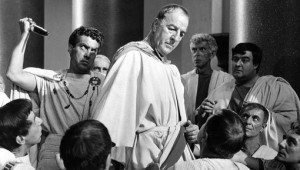What I found very intriguing in Oliver Stone’s film, JFK, was the use of repetition in the film that Pat Dowell mentions in his article, “Last Year at Nuremberg: The Cinematic Strategies of JFK”. The author writes:
“Back and to the left,” the prosecutor and the filmmaker tell us again, “Back and to the left. Back and to the left.” A hypnotic refrain on the sound track, a grainy slow motion image disolving into pink and green and white blobs on the screen. The courtroom audience groans in agony– at the graphic detail hitherto spared them, at the confirmation of their worst fears about a government cover-up, at Garrison’s ceaseless invasion of Kennedy’s final moments (Dowell, 8).
This use of repetition, although for a very short time, is one of the few moments in Garrisons speech where there is a lack of both diegetic sound and music from the soundtrack. Except now it the only noise that is present in the film is Garrison’s voice repeating the phrase “back and to the left”, and the grainy film of Kennedy’s last moments running. This repetition of the phrase is so powerful in the film because it is one of the very few moments where the people were forced to see the truth, and were forced to confront the reality of what happened to their President. The moment is so intense that offscreen the viewers were even groaning during our Tuesday viewing of the film.
In all, I thought it was a very good strategy for the film maker to choose a very minimal use in sound as well as minimal cuts to certain shots in this moment because in my personal opinion this seemed to be “the moment of truth” to the audience in the courtroom, regardless of the verdict.


